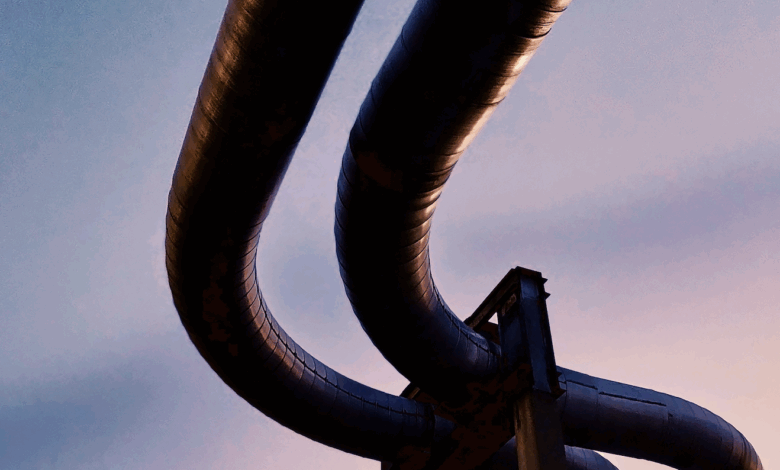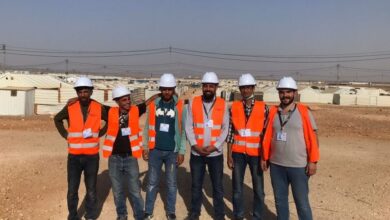
The Cost Control Challenge in Energy Infrastructure
The energy infrastructure landscape is in the midst of a significant transformation as companies seek more efficient ways to monitor and control costs on high-value pipeline and utility projects.
As a project control specialist with extensive experience managing multi-billion-dollar energy infrastructure initiatives, I’ve seen firsthand how artificial intelligence is revolutionizing traditional cost control methodologies, offering unprecedented opportunities to enhance project performance and minimize budget overruns.
Energy infrastructure projects, in particular pipelines and utility systems, face unique cost control challenges due to their scale, complexity, and the dynamic economic environment they operate within. These projects often struggle with detecting defects in critical infrastructure, which can lead to costly breakages and unplanned maintenance. Additionally, material costs for infrastructure projects have skyrocketed by 25-30% in recent years, forcing companies to either place projects on hold or seek innovative solutions to control expenses.
AI-Driven Predictive Analytics – Early Warning Systems
As someone who has managed project budgets for the Mountain Valley Pipeline ($3.2 billion+) and Sabal Trail Gas Transmission project, I’ve observed that traditional cost control methods have significant limitations. These approaches often rely on retrospective analysis, providing insights only after cost overruns have already occurred, rather than preventing them proactively.
The integration of AI into project cost control represents a paradigm shift in how we approach budget management. AI systems can analyze complex data sets quickly, helping project managers establish better benchmarks, set realistic goals, and maintain tighter control over project costs. This capability transforms the approach from reactive to proactive cost management.
During my years managing transmission and distribution projects at SCE, we took a leap into data-driven decision making that transformed our approach to AI project cost control. By implementing predictive analytics tools that analyze our historical project data, we gained capabilities that would have seemed impossible just a few years ago.
For starters, we caught problems before they exploded into major issues. At Southern California Edison, we implemented the Copperleaf portfolio system to centralize all capital projects, creating unprecedented visibility across our portfolio.
This data-driven approach proved invaluable during our wildfire mitigation program’s InspectForce deployment. By continuously analyzing real-time progress data against targets, our system flagged abnormal spending patterns and schedule slippage in the Q3 2024 report—long before traditional methods would have detected issues. This early warning revealed that integration of the inspection hardware and software was exceeding cost estimates while key milestones were slipping. Instead of continuing on a problematic path, we quickly re-baselined the project, extending the planning phase and shifting 2024 milestones into 2025.
This proactive intervention prevented what would have become significant cost overruns, demonstrating how AI-enhanced analytics transforms reactive cost control into predictive financial management.
Enhanced Estimation Accuracy Through Machine Learning
The technology has also dramatically improved our estimation accuracy. In the past, we’d treat each risk factor as an isolated variable, which often missed how these factors compound each other. On pipeline projects especially, I’ve seen how environmental permit delays can trigger contractor standby charges, material storage costs, and even material price increases if the delay pushes procurement into a different market cycle. Our new models account for these interconnections, giving us a much clearer picture of potential cost exposure.
Real-Time Resource Allocation and Coordination
Perhaps most valuable is how these tools have sharpened our resource allocation decisions. At SCE, our transmission line projects span dozens of miles with multiple simultaneous work fronts—a coordination challenge that traditionally led to inefficiencies and cost overruns. Our solution was implementing a Consolidated Mobile Solutions (CMS) program, equipping field personnel with rugged tablets and real-time data access. This AI-enhanced platform enables instantaneous information sharing between crews and project managers, with field updates feeding directly into scheduling systems and dashboards.
When a work front finishes early or encounters obstacles, resource reallocation decisions happen immediately based on live jobsite data rather than weekly reports. This real-time visibility has eliminated the common scenario where crews stand idle at one location while another site desperately needs resources. The resulting improvements in coordination have not only accelerated completion times but significantly reduced labor costs and equipment rental expenses across our transmission portfolio.
These aren’t hypothetical benefits—they’re real results that have changed how I approach project controls on multi-million dollar infrastructure investments. The difference between reacting to problems and preventing them altogether is transformative, both for project outcomes and for the stress levels of everyone involved.
Advanced Forecasting and Supply Chain Optimization
AI is transforming energy infrastructure cost control in ways that matter daily. Take change impact analysis – possibly the most valuable application I’ve seen. On a recent utility project, our team used machine learning to examine a potential supplier change. Rather than just calculating immediate price differences, the system modeled long-term maintenance costs and schedule implications. The insights revealed hidden risks our traditional methods missed, preventing what would have been a substantial cost overrun.
Material cost forecasting has evolved dramatically too. During the Sabal Trail Gas Transmission project—a 515-mile pipeline valued at several billion dollars—we faced significant volatility in material costs and supply chain challenges. By implementing enhanced forecasting, we transformed our approach to procurement decisions.For example, when faced with manufacturing and delivery concerns for 14-inch steel piles at a compressor station, data analytics allowed us to quickly evaluate alternatives. The system confirmed 12-inch piles would meet engineering requirements while being more readily available, preventing costly delays and generating material savings. Similarly, for a critical 102,000-pound gas heater, our logistics optimization tools identified rail transport as the optimal solution—reducing delivery time from two months to three weeks.
These data-driven decisions contributed to completing the project two months ahead of the adjusted schedule despite a four-month regulatory delay. Most importantly, our advanced forecasting and risk modeling helped reduce change orders by approximately $100 million compared to traditional approaches. The project’s success earned it the S&P Global Platts 2017 ‘Construction Project of the Year’ Award.”
Continuous Performance Monitoring Systems
Performance monitoring has become continuous rather than periodic. At SCE, our real-time dashboards identify cost anomalies as they emerge. This flagged several contractor billing errors that would have gone unnoticed for weeks under our old monthly review process. The system’s pattern recognition abilities mirror what researchers have observed in demand-side management applications.
Implementation Challenges and Organizational Readiness
Implementing these systems isn’t without hurdles. Data quality is the foundation everything else rests on – machine learning models simply can’t produce reliable predictions without clean, consistent information. This requires establishing robust data management processes before implementation, an often overlooked prerequisite.
Equally important is organizational readiness. The technology alone isn’t enough; teams need training to interpret and apply AI insights effectively. The balance between automation and expertise is delicate – the goal should be augmenting human judgment rather than replacing it.
Future Developments in AI Cost Control
Looking forward, several developments will reshape how we approach cost control. Digital twins will enable sophisticated simulation and forecasting for both grid and pipeline systems. Risk assessment models will become more nuanced, accounting for the complex interactions between project variables that traditional methods often miss. And as climate adaptation becomes increasingly critical, AI will help stress-test infrastructure designs against extreme scenarios, balancing resilience with cost efficiency.
The integration of AI into project cost control represents a transformative opportunity for energy infrastructure projects. By harnessing the power of predictive analytics, machine learning, and real-time monitoring, project managers can achieve unprecedented levels of cost visibility and control.
Balancing Technology with Human Expertise
As we continue to develop and refine these technologies, the key to success will be balancing technological innovation with human expertise. AI should be viewed as a powerful tool to augment the capabilities of skilled project professionals rather than replace them. With thisbalanced approach, we can look forward to a future where energy infrastructure projects consistently deliver greater value through enhanced cost predictability and control.
Parthiv Varma is a project control specialist with 14+ years of experience managing budgets for multi-billion-dollar energy infrastructure projects, including the Mountain Valley Pipeline and Sabal Trail Gas Transmission initiatives.





